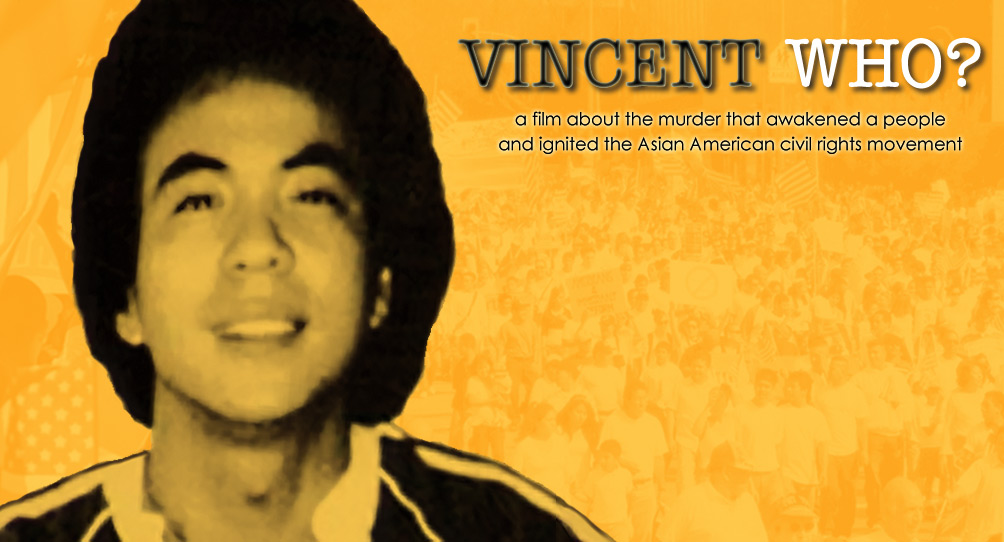20 Jun A national town hall to mark the 30th anniversary of Vincent Chin’s death
Vincent Chin was beaten with a baseball bat 30 years ago on June 19 in a Detroit suburb, and died four days later.
At the time, I was three years out of art school, managing a paint store, and was a budding young rock critic writing for a Denver newspaper. I didn’t follow any news coverage about the attack on Vincent Chin, and I was clueless about the importance of his tragic death. I was still a “banana” — yellow on the outside, but white on the inside. Like the name of the 2009 documentary film about the impact of Chin’s murder on the Asian American community, if you had asked me then about him, I would have said, “Vincent who?”
Today, Vincent Chin is very much on my mind.
In the decades since his death, I’ve become aware and much more appreciative of my ethnic roots, culture and history as a Japanese American, which I used to take for granted. I’ve also become much more aware of my place in the much larger Asian American community.
Chin’s death still resonates three decades later, like the murder of Emmett Till resonates within the African American community as one of the driving forces of the civil rights movement. The 14-year-old Till was murdered in 1955 for allegedly flirting with a white woman.
Chin was celebrating his impending marriage with a bachelor party at a strip club in a Detroit suburb. His wedding was set for June 27. Chin and his friends got in a fight with some out-of-work auto workers. Detroit had been hit by a wave of layoffs in part because of the rise of Japanese automakers such as Toyota and Honda during the 1970s. In Detroit during this time, it was a common publicity stunt for charities to allow people to smash Japanese cars in exchange for donations.
One of the men blamed Chin, who was Chinese American, for causing his layoff. Later the same night, three men tracked down Chin and beat him with a baseball bat. Chin’s last words to a friend before slipping into a coma were, “It’s not fair.” He was brain dead, and died four days later in the hospital.
Two men were convicted of manslaughter (a plea bargain dropped the charges from second-degree murder) and sentenced to three years’ probation and fined $3,000 each. It seems today like a ridiculously light sentence, but this was a hate crime before hate crimes were a criminal offense.
This is Vincent Chin’s legacy. His death was in a sad way, a gift to Asian Americans.
His death mobilized Asian American Pacific Islanders to find their – our – voice. Japanese Americans were fighting for redress over World War II internment; others were still struggling to establish Asian American studies programs at colleges across the country. Chin’s murder brought the disparate forces of Asian America together.
Anyone who is Asian American and starts to connect with her or his history will come across Vincent Chin’s name. His death is a pivotal, catalyzing moment in our community’s consciousness.
Sadly, the stereotyping, racial hatred and mistrust of Asians continues today even though there’s been a lot of progress. (There probably will be a new wave of racial incidents now that a study has shown Asians have surpassed Hispanics as the fastest-growing ethnic group in the US…)
It might be more subtle, like the “Linsanity” that dimmed some of the glow of Jeremy Lin’s explosive play with the New York Knicks earlier this year. Or it might be vicious but not physical, like the verbal and psychological trauma that led Private Danny Chen to commit suicide in Afghanistan. It might be cyclical like the anti-Chinese sentiments that gave emerged during the recent economic downturn, which echo how Japanese were targeted when Chin was killed.
But it’s still here. That’s why it’s worth noting the 30th anniversary of Vincent Chin’s death.
I’ve seen notices for various events across the country but the one available to everyone is organized by Curtis Chin (no relation) of Asian Pacific Americans for Progress. On June 23 at 2 pm ET, APAP is hosting a nationwide Google Hangout with civil rights leaders from across the country speaking in a town hall forum over the Internet. The event will be moderated by Phil Yu of the Angry Asian Man blog, and feature, among others, Mee Moua of the Asian American Justice Center, Tom Hayashi of OCA and Congresswoman Judy Chu (D-CA). You can find more information at www.apaforprogress.org/VC30.
You don’t have to watch and participate alone on your computer, too. For those of you in Denver, if you’re heading to Sakura Square to celebrate the annual Sakura Matsuri, or Cherry Blossom Festival, take the time at noon mountain time to visit the mezzanine level of our “Tiny Tokyo” and you’ll find the local viewing of the Town Hall. I’ll unfortunately be volunteering all day during the festival so I may only get to check in briefly. But since it’s a Google Hangout, the entire event should be watchable in an archive afterwards.
Chin probably would have been amazed at how his death has impacted us, and how we can now use technology in ways unthinkable 30 years ago, to continue learning from his tragedy.
NOTE: Portions of this post were originally published in a 1997 post, and repurposed and updated. Vincent Chin’s murder still looms over the AAPI community, both as a motivator and a reminder that the sensibilities that led to his death are still with us.





